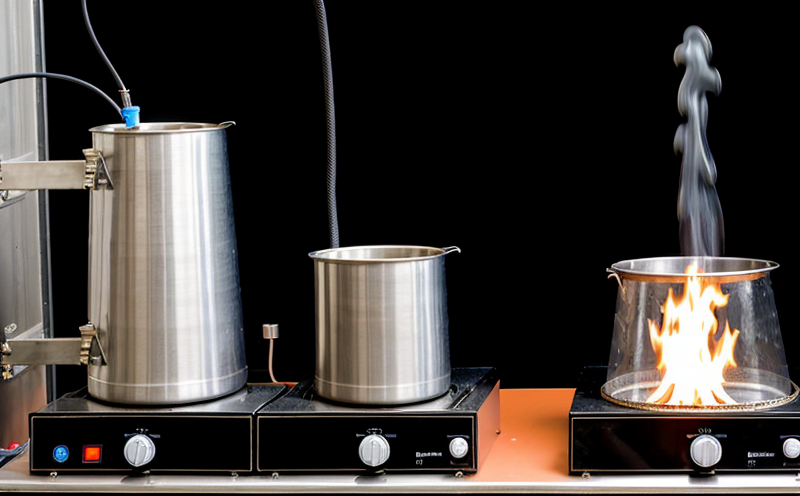Heat Release Testing of Railway Interior Materials
In fire safety testing, heat release testing is a critical component that evaluates how materials react to thermal stress. This service focuses specifically on railway interior materials, which are subject to stringent standards due to the enclosed nature of train carriages and the high occupancy levels.
Heat release testing measures the amount of heat released by a material during combustion along with the smoke produced. The primary goal is to determine the fire hazard potential of various materials used in railway interiors, ensuring they meet regulatory requirements for safety and comfort.
The test is conducted using an Oxygen Consumption Calorimeter (OCC), which quantifies the heat release rate over time under controlled conditions. Specimens are typically cut into standard sizes to ensure consistency across tests. The OCC measures both the heat of combustion and the oxygen consumed, providing a comprehensive understanding of material behavior.
The results from these tests help manufacturers develop safer products by identifying materials that can contribute significantly to smoke generation or increase fire risk. Compliance with international standards such as ISO 5630, ISO 1717, and ASTM E648 ensures consistency in testing methods across different regions.
For R&D engineers working on new materials or designs for railway interiors, this service offers invaluable insights into material performance under fire conditions. By understanding the heat release characteristics of their materials early in development, they can make informed decisions about material selection and design modifications.
Industry Applications
| Type | Description |
|---|---|
| Railway Interior Designers | Evaluate material choices for comfort and safety. |
| Manufacturers | Ensure compliance with fire safety regulations. |
| Regulatory Bodies | Enforce standards to protect public safety. |
- Railway interior designers use this data to select materials that are both aesthetically pleasing and fire-safe.
- Manufacturers rely on the results to modify their processes if necessary, ensuring all components meet safety standards.
- Regulatory bodies utilize these findings to enforce compliance with national and international codes related to railway safety.
Customer Impact and Satisfaction
The rigorous nature of heat release testing ensures that railway interior materials are safe under extreme conditions, thereby enhancing passenger comfort and reducing the risk of injury during emergencies. This service contributes significantly to customer satisfaction by providing reliable data that supports informed decisions regarding material selection.
Customers can trust that their products have been rigorously tested according to recognized international standards like ISO 5630 and ASTM E648, which are widely accepted in the industry. Compliance with these standards not only enhances product quality but also ensures regulatory compliance, reducing potential liabilities for manufacturers.
By offering this service, we help our clients stay ahead of evolving fire safety regulations and market trends. Our commitment to accuracy and consistency in testing results fosters long-term partnerships built on mutual trust and respect.
Environmental and Sustainability Contributions
- Evaluating materials that minimize smoke production reduces the environmental impact during fires.
- Identifying safer alternatives helps reduce the overall carbon footprint of railways.
The heat release testing service plays a crucial role in promoting sustainability by evaluating materials that have lower environmental impacts. By choosing materials with reduced smoke emissions and improved fire resistance, railway operators can contribute positively to environmental conservation efforts.
This service also supports sustainable development goals by helping manufacturers create products that are not only safe but also environmentally friendly. The data generated from these tests helps guide the industry towards more responsible practices in material selection and design.





